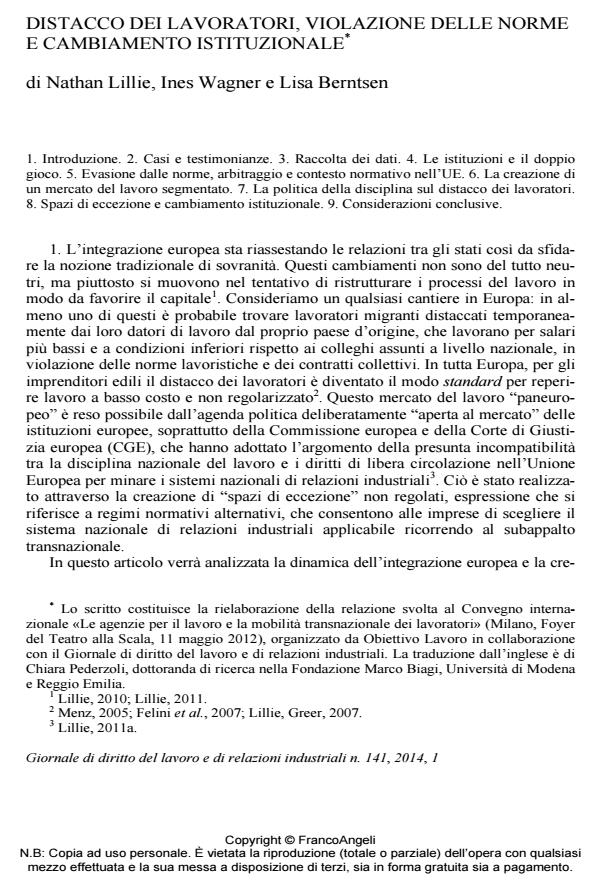Distacco dei lavoratori, violazione delle norme e cambiamento istituzionale
Titolo Rivista GIORNALE DI DIRITTO DEL LAVORO E DI RELAZIONI INDUSTRIALI
Autori/Curatori Nathan Lillie, Ines Wagner, Lisa Berntsen
Anno di pubblicazione 2014 Fascicolo 2014/141
Lingua Italiano Numero pagine 20 P. 71-90 Dimensione file 770 KB
DOI 10.3280/GDL2014-141003
Il DOI è il codice a barre della proprietà intellettuale: per saperne di più
clicca qui
Qui sotto puoi vedere in anteprima la prima pagina di questo articolo.
Se questo articolo ti interessa, lo puoi acquistare (e scaricare in formato pdf) seguendo le facili indicazioni per acquistare il download credit. Acquista Download Credits per scaricare questo Articolo in formato PDF

FrancoAngeli è membro della Publishers International Linking Association, Inc (PILA)associazione indipendente e non profit per facilitare (attraverso i servizi tecnologici implementati da CrossRef.org) l’accesso degli studiosi ai contenuti digitali nelle pubblicazioni professionali e scientifiche
Il saggio si incentra sull’impatto del processo di integrazione europea sulla tradizionale nozione di sovranità nazionale. Lo studio, condotto nel settore edile attraverso interviste sul campo, analizza le conseguenze negative connesse al distacco transnazionale dei lavoratori. Gli Autori mettono in luce come proprio il contesto integrato europeo consenta l’elusione dei limiti posti dalle normative nazionali, così determinando una riduzione di costi e garanzie che conduce ad una segmentazione delle tutele nel mercato a scapito dei diritti dei lavoratori.
Parole chiave:Distacco dei lavoratori; Elusione normativa; Integrazione europea; Sovranità; Segmentazione del mercato del lavoro.
Nathan Lillie, Ines Wagner, Lisa Berntsen, Distacco dei lavoratori, violazione delle norme e cambiamento istituzionale in "GIORNALE DI DIRITTO DEL LAVORO E DI RELAZIONI INDUSTRIALI " 141/2014, pp 71-90, DOI: 10.3280/GDL2014-141003